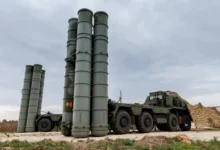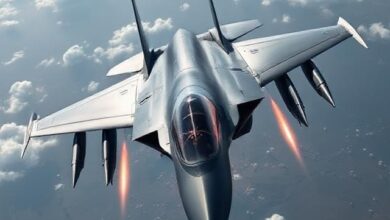India Clears Deal To Purchase Armed Predator Drones From The US

- The Indian Navy has been improving its way of keeping an eye on China's growing actions, such as the People's Liberation Army warships' frequent visits to the Indian Ocean Region.
- The US company General Electric (GE) and the Indian company Hindustan Aeronautics Limited may sign a deal to make the engine together.
On Thursday, the Defense Acquisition Council (DAC) cleared a deal between India and the United States to buy Armed Unmanned Aerial Vehicles (UAVs) from the US.
The plan was approved by the DAC, which is led by Defense Minister Rajnath Singh. The DAC is the most important group in the Ministry of Defense that makes decisions.
General Atomics Aeronautical Systems, Inc. (GA-ASI) will sell about 30 MQ-9B drones that can carry weapons. The deal was made public before Prime Minister Narendra Modi’s planned trip to the US. The Indian Navy will get 12 of these, and the Army and Air Force will each get the rest. The next step is for the US Congress to agree to the deal. This could be the second important defense deal after the much-talked-about co-production of the GE-F 414 turboprop engines for the improved Tejas Mark 2.
There is a chance that the US company General Electric and the Indian government-owned defense company Hindustan Aeronautics Limited will sign a deal to make the Tejas Mark 2 engine together. From June 21 to 25, the Prime Minister will be in the US on an official state visit. President Joe Biden will meet him at the White House. It will be Modi’s first trip to the US as prime minister, which he has held for nine years.
These drones can stay in the air for a long time at high altitude and can be armed with air-to-ground missiles and smart bombs that can hit with great accuracy from a long distance. It can work in all kinds of weather for more than 30 hours and up to 5,500 nautical miles. About $3 billion is expected to be spent on the whole deal.
Once they are bought, the drones will help improve monitoring along the Line of Actual Control (LAC) and further into the Indian Ocean.
The Indian Navy has been using two silent MQ-9A predator drones since September 2020, when they were leased from General Atomics. Navy has been using them to keep an eye on what’s going on in the area around the Indian Ocean. Along the Line of Actual Control, these drones were also used to keep an eye on what the People’s Liberation Army of China was doing on the ground on its side of the northern borders.
A source said that these unmanned aerial vehicles (UAVs) can find, identify, and track ships at sea. Once armed, they can also attack. Also, because they have such a long range, these UAVs can do their jobs all the way to the choke places at the ends of the Indian Ocean Region.
The high-altitude, long-endurance UAVs can also fire Hellfire missiles and about 450 kilograms of explosive materials. The three forces are buying hunter-killer Sea Guardian drones because they can do a lot of different things, such as maritime surveillance, anti-submarine warfare, and over-the-horizon targeting.
The MQ-9B comes in two different versions: SkyGuardian and SeaGuardian, which is its sister. In 2020, the Indian Navy rented from General Atomics two MQ-9B Sea Guardian drones for one year to keep an eye on the Indian Ocean. The length of the lease has since been made longer. The Indian Navy has been improving its way of keeping an eye on China’s growing actions, such as the People’s Liberation Army warships’ frequent visits to the Indian Ocean Region.
Long endurance, lethal UAVs
These UAVs can find and spot ships on the water. Once they have weapons, they can also attack and run operations all the way to the choke points at the ends of the Indian Ocean Region.
MQ-9B drones
Endurance
It can work in all kinds of weather for more than 30 hours and for up to 5,500 nautical miles.
Manufacture
General Atomics Aeronautical Systems, Inc. (GA-ASI) is an American company.
Overall cost $3 billion
GA-ASI makes unmanned planes and sells radar, signals intelligence, and automated airborne devices.
Final go-ahead
Congress in the US has to agree to the deal.
The Navy is said to be happy with the Sea Guardian, which is the surveillance form of the MQ-9B. Two of them were leased in 2020 to keep an eye on the maritime area.
Partners
The US company General Electric (GE) and the Indian company Hindustan Aeronautics Limited may sign a deal to make the engine together.
Another deal
This could be the second important defense deal after the much-discussed co-production of the GE-F 414 turboprop engines for the improved Tejas-Mk2.







Facebook Comments